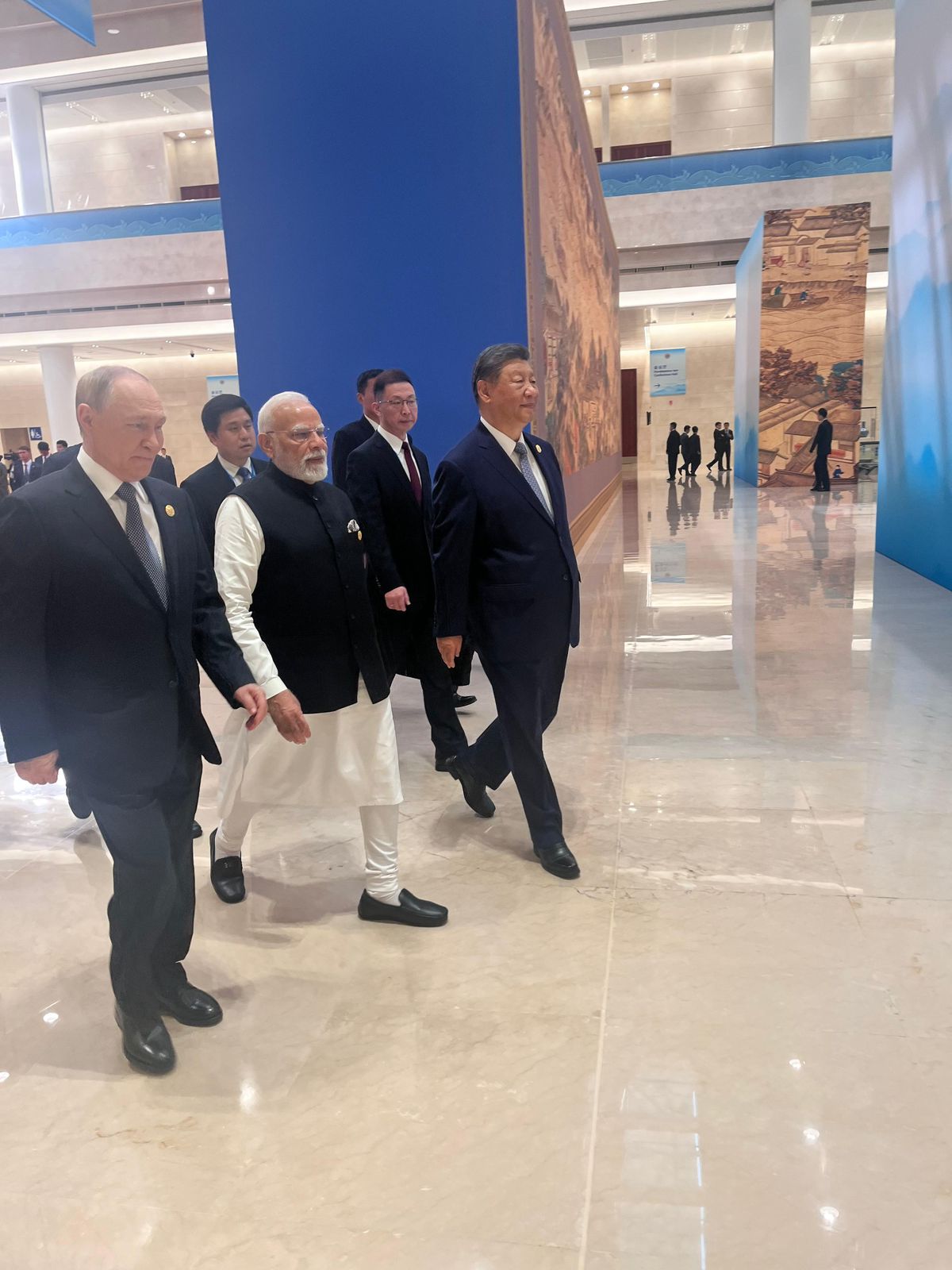Modi, Putin and Xi Share Bonhomie at SCO Summit as Multipolar World Takes Shape
Indian Prime Minister Narendra Modi, Russian President Vladimir Putin, and Chinese President Xi Jinping shared warm moments and substantive exchanges in Tianjin on Monday, ahead of the Shanghai Cooperation Organisation (SCO) Summit plenary session.
 |
| Image Source: PM NaMo |
The images captured Modi and Putin greeting each other with smiles and a warm hug, a gesture that underlined the resilience of the long-standing India–Russia partnership.
According to Foreign Secretary Vikram Misri, Modi will address the SCO plenary outlining India’s approach to fostering regional cooperation before holding a bilateral meeting with President Putin later today.
Modi’s bilateral with Xi Jinping took place on Sunday, where both leaders reaffirmed their commitment to peace along the Line of Actual Control, welcomed the resumption of Kailash Mansarovar Yatra and direct flights, and stressed that India and China are “partners, not rivals.”
Multipolar Momentum, Tariff Tensions
The trilateral optics of Modi, Putin, and Xi together at Tianjin arrive against a backdrop of profound shifts in the world order.
All three leaders have framed their engagement in terms of multipolarity, sovereignty, and resistance to what Xi Jinping called “Cold War mentality, camp confrontation, and bullying behaviour.”
The SCO meet is also unfolding under the shadow of U.S. President Donald Trump’s tariff offensive, which has imposed a 50% duty on Indian exports as punishment for New Delhi’s continued purchase of discounted Russian crude oil. India has rejected the measures as “unjustified and unreasonable,” while Moscow has termed them “illegitimate coercion.”
For New Delhi, closer coordination with Moscow and Beijing within multilateral frameworks like BRICS and the SCO provides breathing space and leverage against Western economic pressure.
Modi’s bilateral with Xi focused on building vishwas, samaan aur samvedanshilta -- trust, respect, and sensitivity -- as the foundation for ties.
His scheduled meeting with Putin is expected to deepen defence and energy cooperation, with both sides targeting resilient trade and settlement mechanisms insulated from U.S. pressure.
Russia–India–China as New Pole
Russian envoy to international organisations in Vienna, Mikhail Ulyanov, described the growing India–Russia–China partnership as part of a “qualitatively new system of international relations.”
He noted that despite Western sanctions, tariffs, and diplomatic isolation efforts, the Eurasian trio was shaping a parallel order built on sovereignty, energy cooperation, and multipolar balance.
The symbolism of Modi, Putin, and Xi in Tianjin extends beyond optics. For the Global South, it signals an alternative vision of globalisation not dominated by Washington.
With Modi set to invite Xi to the 2026 BRICS Summit in India and Putin preparing for his own visit to New Delhi later this year, the momentum reflects an era where multipolarity is no longer aspiration but emerging structure.
